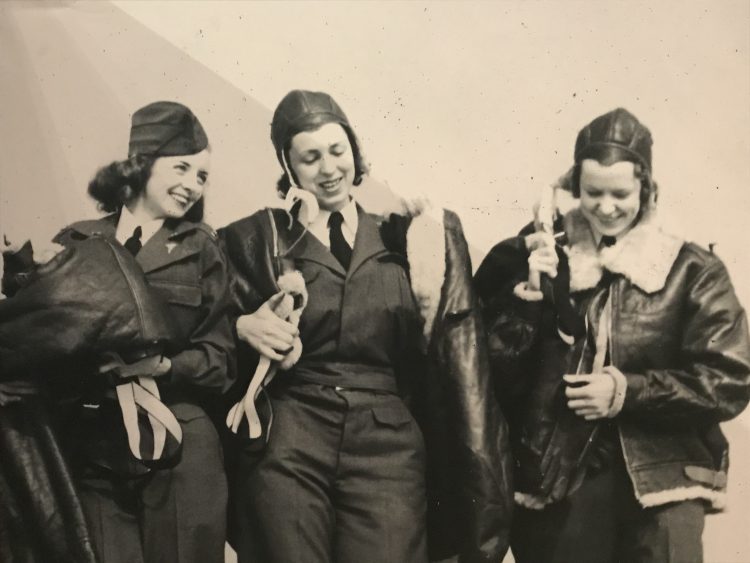The role of women in World War Two is often underplayed and underrepresented. As part of Women’s History Month, this article will give the spotlight to three groups of women who were vital to the functioning of the RAF during WW2, and who played a significant role in Lincolnshire’s aviation history.
Lincolnshire’s Aviation Heritage
In the First World War, one in 14 of all British aircraft were manufactured in Lincolnshire. In WW2 Lincolnshire had over 100 airfields, more than any other county- the exact figure is unknown as some of these were decoys. This was due to its flat landscape, making it ideal for runways and its geographical proximity to Germany.
The usual stalwarts appear in the annals of Lincolnshire’s RAF wartime heroes: Wing Commander Guy Gibson, awarded the Victoria Cross for his leading role in the Dambusters Raid in 1943 and Douglas Bader the celebrated RAF fighter ace, who lost both legs in a plane crash and continued as an active spitfire pilot.
So, what about the heroines?
Spitfire Heroines
Members of the Air Transport Auxiliary (ATA) were civilians, often women, employed to deliver planes from factories to RAF bases in the Second World War. They flew all types of planes that were active in WW2, including: Spitfires, Hurricanes and Lancaster Bombers, without the use of radios or navigation aids.
Many endured prejudice. Mary Ellis, who flew over 1000 planes throughout the war, said the ground crew at one RAF base didn’t believe she was the pilot of a Wellington bomber she’d just landed. She remembered: “They actually went inside the airplane and searched it. Everybody was flabbergasted that a little girl like me could fly these big aeroplanes all by oneself.”
Lettice Curtis’ skills were held in such high esteem by her superiors- she was the first women to fly a Lancaster bomber- that she was involved in the preparations for the Dambusters raid led by Wing Commander Guy Gibson, based at RAF Scampton, Lincolnshire by delivering specially modified planes from factories to the base.
Nearly one in ten ATAs were killed in the war.
Winged Angels
This was the moniker of nurses attached to the 817thMedical Air Evacuation Squadron. Throughout the war they were responsible for the evacuation of 38,172 casualties of all nationalities across Europe and Africa. They were based at RAF Barkston Heath, attached to the larger RAF Cranwell, Lincolnshire.
Ann Macek Krueger was a highly decorated 817th nurse. Amongst other recognitions of service, she received the Soldier’s Medal for heroic achievement when her plane full of evacuated patients crash landed in France in 1944. Her bravery helped ensure that all patients were saved from the wreckage. All survived.
WAAF
Women’s Auxiliary Air Force (WAAF) Intelligence Officers were vital to the successful functioning of the RAF. They performed intelligence operations, cracked codes and operated barrage balloons, which were responsible for protecting key targets in the UK by deterring enemy planes. Steel cables attached to the balloons made it impossible for planes to fly underneath, forcing them into the path of anti-aircraft guns. Many doubted that women had the physical strength and stamina to manoeuvre the balloons, which were 66ft long and 30ft high. However, the WAAF were so successful that they eventually ran over 1000 barrage sites across Britain, with over 15,700 WAAF operators. RAF Goxhill, Lincolnshire was the site of the balloon centre that protected the critical docks at Grimsby and Immingham.
Gallery Slideshow Captions
- Nurses in the 817th Medical Air Evacuation Squadron, part of a display at the, Century of Valour exhibition at the Collection Museum, Lincoln. Photo: Stephanie Lake
- A nurse in the 817th Medical Air Evacuation Squadron exiting a plane. part of a display at the, Century of Valour exhibition at the Collection Museum, Lincoln. Quote on the display reads: “Winged Angles. Saving lives of friend and foe alike…”. Photo: Stephanie Lake
- Lettice Curtis, Jenny Broad, Wendy Sale Barker, Gabrielle Patterson and Pauline Gower of the Air Transport Auxilary in 1942. Photo: Unknown, Creative Commons.
- Lettice Curtis, Air Transport Auxiliary. Photo: Unknown, Creative Commons.
- Members of the Women’s Auxiliary Air Force operating a barrage balloon. Photo: Unknown, Creative Commons.
- Members of the Women’s Auxiliary Air Force, taking part in intelligence operations, such as plotting information. Photo: Unknown, Creative Commons.
- Intelligence officers of the Women’s Auxiliary Air Force, taking part in intelligence operations, such as cracking codes and ciphers. Photo: Unknown, Creative Commons.






